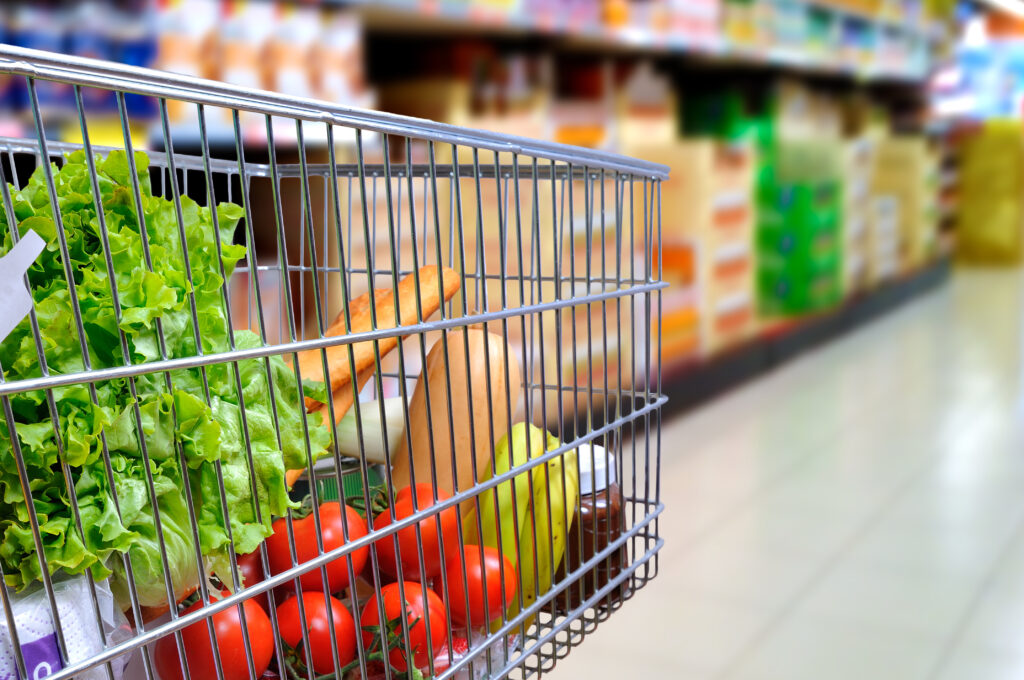
Risk & Resilience in Logistics Network Design
Reimagine resilience and proactively minimize supply chain risks

Disruptive market developments are exerting pressure on grocery retail supply chains. In a series of blog posts, we will investigate these trends, explain their impact on the supply chain and show how grocery retailers can build a future-proof supply chain.
Changing customer and store requirements as well as an increase in digital sales channels are putting pressure on end-to-end supply chains of full assortment grocery retailers. Current grocery retail supply chains were designed as much as 70 years ago, based on the handling and throughput of large volumes. Today, this foundation is shifting rapidly towards much smaller delivery quantities, reduced response times, and more frequent delivery. It is essential for supply chain managers to exactly understand how these disruptive market developments impact their supply chain and what needs to be done to keep meeting the increasing demands on the supply chain in the future. This blog post explains the current market developments and highlights the three guiding principles for future-proof grocery retail supply chains.
In the past, supermarkets used to be planned with similar sizes and attributes, following the principle of a “standard” supermarket. Often, they were built close to rural development areas with sufficient space and parking possibilities for family shoppers. The corresponding supply chain setup focused on the handling and throughput of large volumes. In the last few years, we have observed five major trends that are increasingly challenging this traditional picture:
We mainly see two strategic responses from full-assortment grocery retailers to the new market trends: convenience stores and e-commerce. Both have a fundamental impact on the supply chain.
Convenience stores need rather little space, averaging 100 m2, while conventional mid-sized supermarkets operate on around 1,200 m2. They are typically positioned much closer to their customers, mainly in densely populated areas serving the daily needs of their neighborhood and being accessible by foot. A typical convenience store operates between 1,200 and 2,500 SKUs (mid-sized supermarkets have around 12,000), leading to a comparably higher number of SKUs per m2. For the supply chain, an increase in smaller stores means more points of delivery with less demand per SKU. This could lead to issues of shelf life and shelf space when sending standard minimum order quantities (e.g. full box). Furthermore, these small stores have special delivery requirements as they are in many cases not reachable by bigger trucks and have limited capacity for shelf refilling and backroom space if supply peaks occur.
E-commerce is expected to grow by 66% in Europe in the five years leading up to 2023, not taking into consideration the Covid-19 lockdowns and the resulting boost in online shopping.[4] In basic terms, two key types can be distinguished:
One of the biggest challenges for e-commerce in the end-to-end supply chain is how to deal with stockouts. Typically, retailers initiate e-commerce with deliveries from stores. From our perspective, in-store stockouts are not acceptable for e-commerce customers. Sooner or later customer expectations will lead to the need to open a dark store. In contrast to brick & mortar sales channels, it is challenging to steer customer demand, as e-commerce does not have tools such as positioning or dynamic price reductions (for end of shelf life). Hence new ways need to be found to sell off excess stock online. Short shelf-life products such as dairy are otherwise at constant risk of being thrown away in dark stores.
We have seen how grocery retailers are responding to the new market developments and how this impacts their supply chain. In our next blog post, we will take a look at the future and explain the prerequisites and key guiding principles of a future-proof grocery retail supply chain.
We would like to thank Alexandros Anagnostopoulos, Warehousing Director at AB Vassilopoulos, a brand of Ahold Delhaize, for his valuable contribution to this article.
[2] https://ec.europa.eu/eurostat/statistics-explained/index.php/Household_composition_statistics
This post is the first part of our blog series on how to build a future-proof grocery retail supply chain. Further parts of the series:
Part 2: The Three Principles of Future-Proof Grocery Retail Supply Chains
Part 3: Grocery Retail: How to Align the Supply Chain towards Market Demands
Part 4: Boosting Sales Performance in Grocery Retail Supply Chains
Part 5: Setting the Table: Designing a Supply Chain Network in Grocery Retail

Reimagine resilience and proactively minimize supply chain risks

This article shall help you to understand how to optimize your inventory positions in a month – or even less.

Modern PLM systems empower businesses to achieve product excellence in fast-paced markets by enhancing collaboration, agility and innovation.

Read how the Campaign Planner & Designer (CPD) helps you to manage supply chain variability.
© Camelot Management Consultants, Part of Accenture
Camelot Management Consultants is the brand name through which the member firms Camelot Management Consultants GmbH, Camelot ITLab GmbH and their local subsidiaries operate and deliver their services.